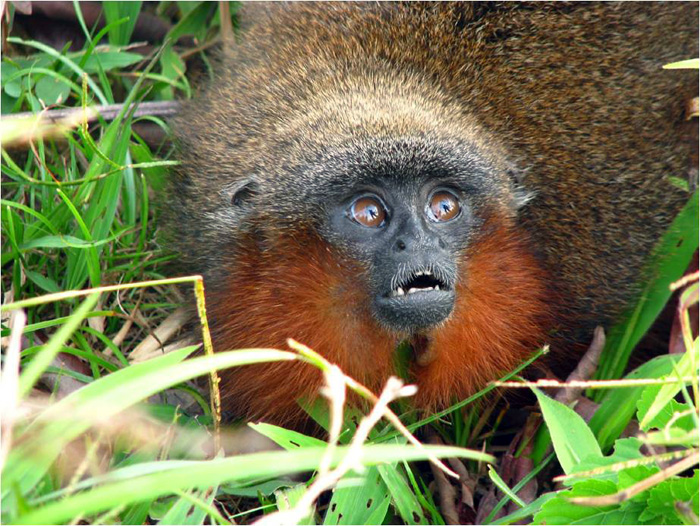This observation was made by a young biologist from Universidad Nacional de Colombia called Javier García, who made part of the group of scientist that defined the specie, which is supported economically by the Concervación Internacional Colombia organization. According to the biologist the excessive livestock farming, deforestation, and forest fragmentation of Caqueta"s forests put this new specie at serious risk.
"The area in Caquetá where this monkey lives is highly deforested, especially due to the intensive livestock farming and the constant colonization that has been happening for almost 40 years. This phenomenon is part of the colonization ring that is affecting the entire Amazon region. Besides, there are other problems caused by deforestation and burning; two techniques used in the Amazon region to extend grass for livestock farming and illicit crops," said García.
Professors Thomas Defler, who is an expert in primates from Universidad Nacional de Colombia, had the initiative to study this monkey. He affirms that the first indicator about this new specie appeared almost forty years ago when scientist Martin Moynijan made an observation about it.
"I arrived to Colombia in 1976 and when I read a book written by Professor Moynijan I felt curious about the existence of this monkey. I tried to reach the zone for thirty years, but I was stopped by the law and order issues. Fortunately I met student Javier García who was born in Caquetá and who had the contacts to reach the zone. In addition, the security issues improved and it was possible to make a better exploration," explained Defler.
Professor Marta Lucia Bueno, an expert in cytogenetics from Universidad Nacional de Colombia, confirmed through different genetic studies that the zogui-zogui monkey was indeed different form the rest of the primates located in the north and south of the region in Caquetá where zogui-zogui lives.
"We had worked with the Callicebus genus for four or five years. When we performed tests on specimens confiscated by the police, immediately we realized there were very particular taxonomical questions that we considered interesting to answer. We found a 16 to 44 chromosome reduction, and we thought: well, there must be a very big taxonomical problem," said Professor Bueno.
Although the zogui-zogui monkey"s appearance is similar to that of other primates in the region, since its characteristics are similar, when scientist analyzed it closely and with the genetic proves, it was confirmed that this specie was unique.
The monkey"s howl, the way it socializes and the places in which it prefers to live are very particular. According to Javier García, people were not sure that the zogui-zogui monkey was new specie, "the only characteristic people in the region used to identify was its vocalization which is very different from that of other monkeys."
One of the main concerns for the researchers is that this new specie is not in an area of natural protection such as a reserve or a natural park. This situation makes the new specie more vulnerable than what it is now. "Although many studies are necessary, we know that this monkey prefers to live in flood zones, marshes, and closed to canyons," says García. This is a starting point to consider new natural reserves for the future in this region where forests of Caquetá are constantly reduced.
According to Professor Defler there are thirty four species of primates in Colombia including the zogui-zogui monkey. This situation positions Colombia, and Peru, on the fifth place in the world with the biggest monkey biodiversity. "However, there are other categories in consideration that could increase or diminish the number of species depending on scientific criteria," says the Professor.
The young researcher from Caquetá, who was an important part in the scientific description of the zogui-zogui monkey, says he will keep his commitment to this monkey. "My master"s degree and my PhD will be center on this specie."
Sedes
 Correo Electrónico
Correo Electrónico
 DNINFOA - SIA
DNINFOA - SIA
 Bibliotecas
Bibliotecas
 Convocatorias
Convocatorias
 Identidad UNAL
Identidad UNAL



